The mission of NSTA is to promote excellence and innovation in science teaching and learning for all.
National Conference
Follow NSTA
Next Gen Navigator
By Cindy Workosky
Posted on 2017-06-26
I am the type of educator who gets very excited about new strategies, new and innovative technology, and new activities for students. However, I was more nervous about than excited about to choosing phenomena for my science units. I felt tremendous pressure to pick the “right” ones, ones that were engaging and exciting, while matching the standards precisely. Like all teachers would do, I started asking my peers how they were managing this work and began experimenting with phenomena myself. I’ll share a bit about my journey in embedding phenomena in the elementary grades.
Call to Adventure
The first time I heard about phenomena was at an NSTA conference a few years ago when a presenter displayed an energy stick, which I now know is a toy used to explore the science of electricity and circuits. The presenter only briefly explained what the object was, and I was puzzled about what she meant.
In small groups, we experimented with different ways to activate the toy’s lights and buzzers, asking many questions and constructing explanations. I quickly learned that phenomena were events that caused students to ask questions and explore underlying explanations and concepts of the unit. It was an engaging and memorable experience to do a lesson that was “flipped” in this way, and I wanted more. The following lessons provide opportunities for students to construct scientific understanding and meaning of phenomena.
The Starting Line
This year, I collaborated with a first-grade teacher who was working on a light unit. I wanted to start small in my phenomena dabbling, so I picked a lesson that used a light box to explore the concept that light is needed to see objects. I gathered all the first graders together and asked one student to turn off all the lights.
I asked the students if they could still see now that the lights were off. They noticed that windows, digital clocks, and hallways let in light. Some students noted how different things looked with the lights off; one student even said the colors were different. I used this discussion to engage them in thinking about how they are able to see the world around them, without giving any feedback or verifying if their answers were correct.
We did the light box activity, and students compared what they saw in the dark box with what they observed when looking in the box with a flashlight. After constructing diagrams in our journals, we returned to the original phenomenon about the ability to see with the lights off. Students revised their thinking and shared about other types of light that were still in the room that allowed them to see. Their experiences and discourse led the learning, not the teacher instructing on the content.
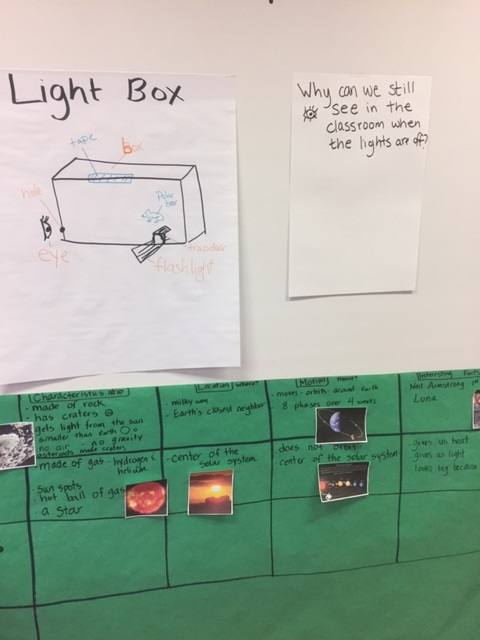
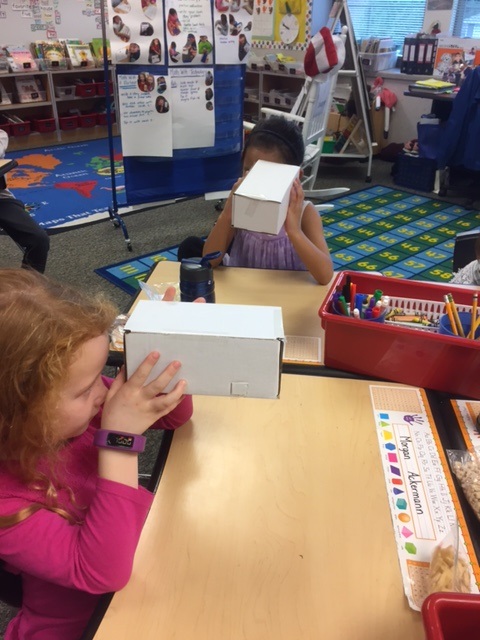
The Challenges
Finding a phenomenon for a lesson was a much easier starting place, but next I had to determine how to find one to anchor an entire unit. I had some concerns: What if the class loses interest or the phenomenon does not cover all the standards I would like to include? I set out to find answers, this time with a fifth-grade unit on plants that was out of date and not aligned to the NGSS.
|
Old Unit |
Updated Unit |
|
“How do plants grow?” |
“Why did China wage the Sparrow War in 1958? |
|
|
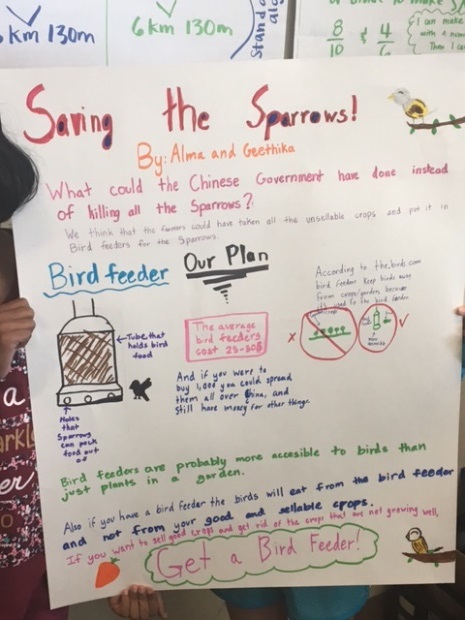
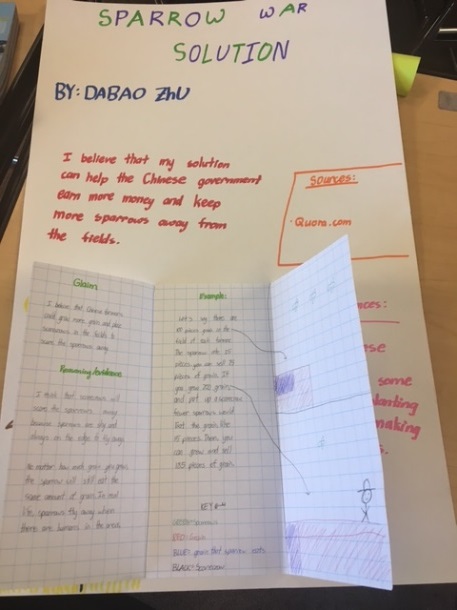
The Revelation
Though this work can be messy and uncertain, I recommend that teachers just embrace it. I realized no “perfect” phenomenon exists for every single unit. Our world, our work, and our classrooms are constantly changing, and so must we.
I have found, though, that perusing books, videos, or photographs can spark ideas for new phenomena. In fact, while writing this article, I scrolled through old photos and was inspired by the rainbow reflection on my son’s shoes, the hummingbird sitting on the feeder, the red striations of the rocks of Iceland, and so much more. Why not invite students and families into this process of noticing phenomena?
The Return and Reflection
I learned a tremendous amount this year, and have revised my own thinking multiple times. I am still figuring all this out, but I am determined to continue my journey of using phenomena-based instruction to provide excellent, rigorous, and equitable experience to all students.
My Learning This Year
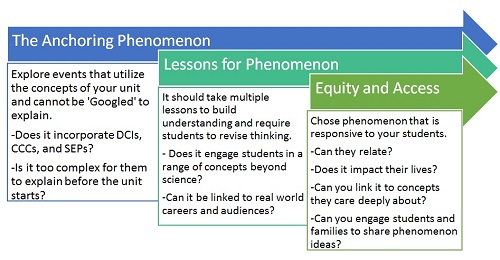
Resources:
Getting Familiar with Phenomena – Planning for Engagement Primer
Video of Phenomena – Teaching Channel
Examples of Phenomena – Many videos and photos
Checklist for Phenomena by STEM Teaching Tools

Liza Rickey
Liza Rickey is a science and STEM curriculum specialist in the Issaquah School District in Issaquah, Washington, who has taught elementary students for the past 15 years. She holds a bachelor’s degree in zoology and a master’s degree in education from the University of Washington and is an alumna of the Mickelson ExxonMobil Teachers Academy and the Teachers College Writing Institute. She recently finished her administration certification and is excited to be a part of Teaching Channel’s Next Gen Science Squad. Connect with her on Twitter at @lizarickey.
This article was featured in the June issue of Next Gen Navigator, a monthly e-newsletter from NSTA delivering information, insights, resources, and professional learning opportunities for science educators by science educators on the Next Generation Science Standards and three-dimensional instruction. Click here to access other articles from the June issue on Anchoring Phenomena: What Are They and Why Do They Matter? Click here to sign up to receive the Navigator every month.
Visit NSTA’s NGSS@NSTA Hub for hundreds of vetted classroom resources, professional learning opportunities, publications, ebooks and more; connect with your teacher colleagues on the NGSS listservs (members can sign up here); and join us for discussions around NGSS at an upcoming conference.
The mission of NSTA is to promote excellence and innovation in science teaching and learning for all.
National Conference
Follow NSTA
Disclaimer: The views expressed in this blog post are those of the author(s) and do not necessarily reflect the official position of the National Science Teaching Association (NSTA).
Biology Climate Change Environmental Science General Science Inquiry Instructional Materials Learning Progression Lesson Plans Life Science New Science Teachers NGSS Phenomena Physical Science Science and Engineering Practices Teacher Preparation Teaching Strategies Three-Dimensional Learning